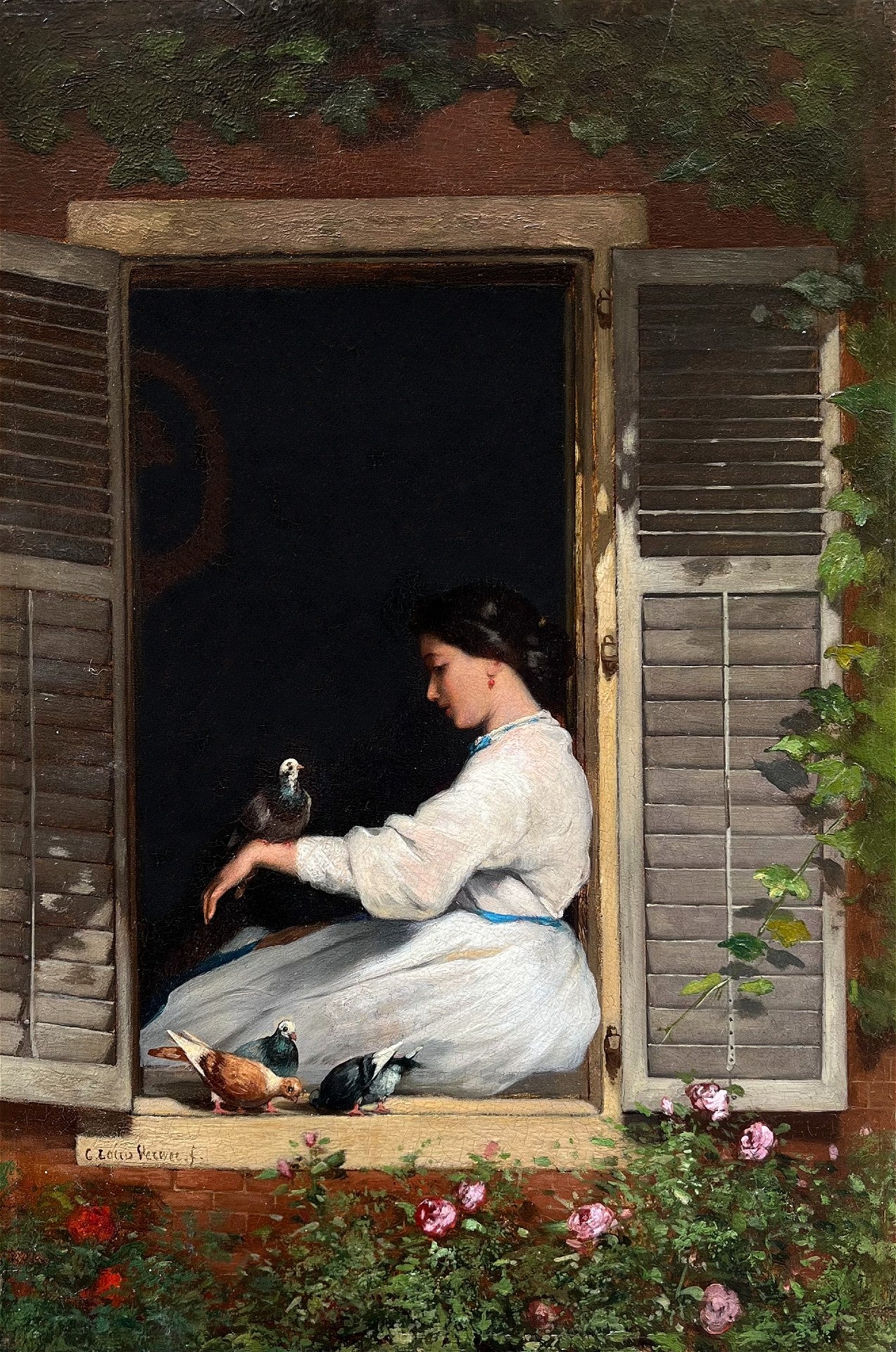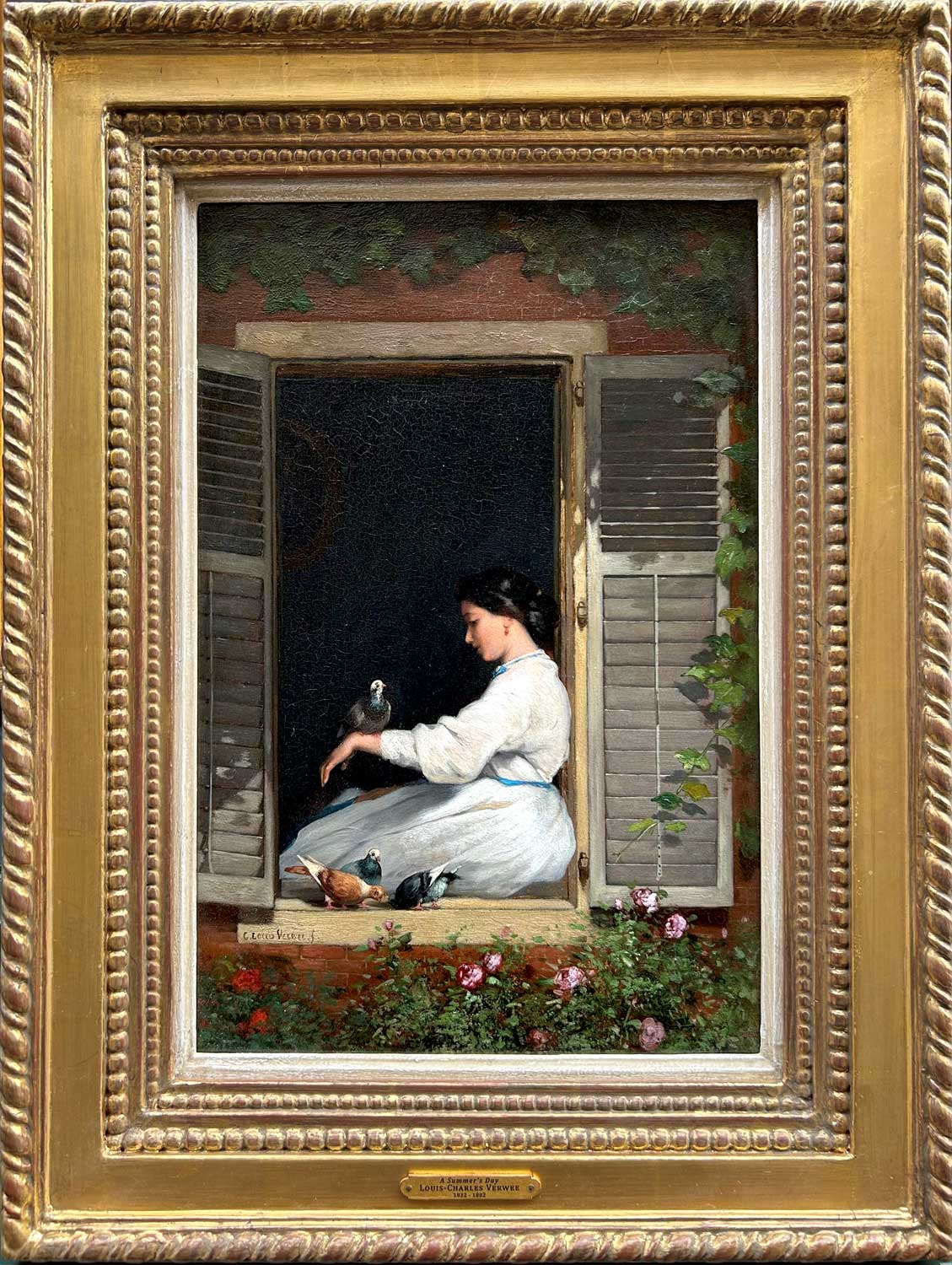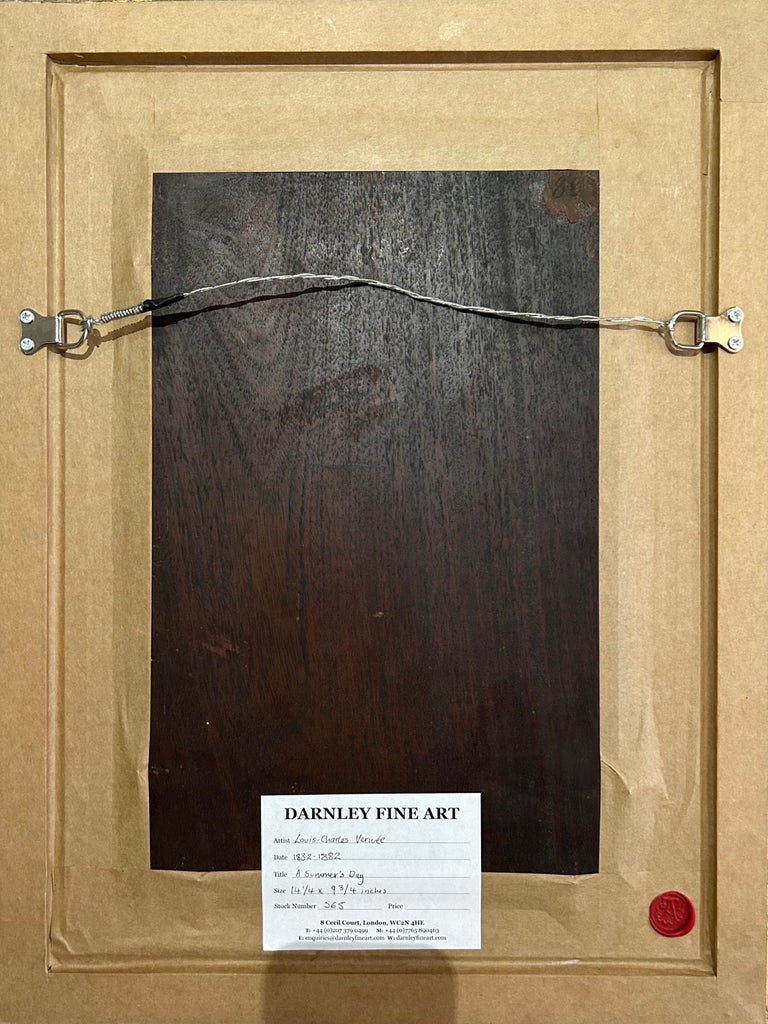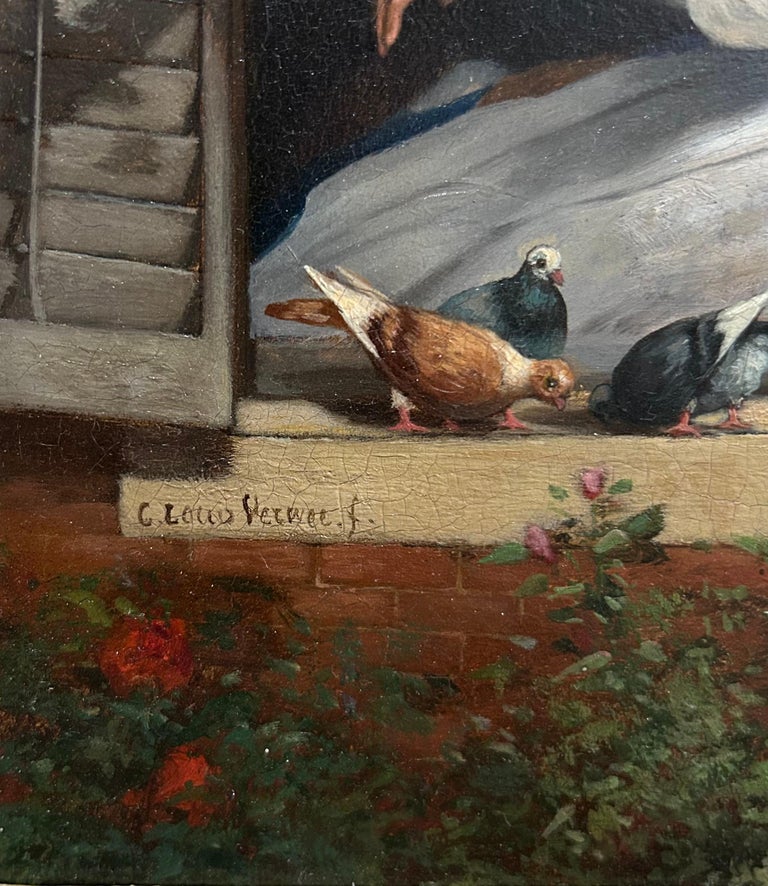

Louis-Charles Verwee
A Summer's Day
Oil on panel, signed lower left
Image size: 14 1/4 x 9 3/4 inches (37 x 24.8 cm)
Handmade gilt frame
The subject matter of this painting is imbued with a sense of childlike innocence and peace. The white dress that the young female subject wears connotes both innocence and simplicity - it is a modest garment, not overly lavish or extravagant. An air of tranquility also pervades the painting - the pigeons are calm around the lady, with one even perched upon her arm and looking up towards her, characterising her almost as a gentle maiden that in whose company even the most skittish of creatures find peace. The symbolism of pigeons as representative of spiritual messengers suggests an ethereal quality to the woman and the scene.
Verwee’s skill as a portraitist and genre artist is readily apparent in this painting. The classical style and realism lend an air of elegance to the image, whilst its ordinary subject matter - a young lady feeding birds - creates a sense of intimacy and honesty. Verwee’s attention to detail is also apparent, as he accurately renders the bunched fabric of the lady’s dress, as well as the bent position of her hand and the creases in her neck as she angles her head downwards towards the pigeon. The lighting of the image perfectly frames the lady, ensuring that she stands out against the dark background of the unseen interior behind her. A smaller detail to notice is the wonderful rendering of the iridescent feathers on the necks of the pigeons.
Louis-Charles Verwee
Louis-Charles Verwee was born in Brussels in 1832, and was the son of animal and landscape painter Louis-Pierre Verwee. His father passed on his artistic skills to both Louis-Charles and his younger brother Alfred, who became an animal and landscape painter, and the two studied under their father for some time. However, Louis-Charles did not want to paint the subject matters of his father, and instead focused on portraits and genre scenes. He soon began to study in the workshops of Alfred Stevens and Gustave Leonard de Jonghe.
Louis-Charles’ works focus on interior scenes depicting high-society young women or children, often undertaking daily tasks which would otherwise appear uninteresting. This lends a sense of honesty and spontaneity to his paintings. His works were immensely popular, even making it into the Belgian royal collection, and Louis-Charles exhibited regularly at the Salons in Brussels, Antwerp, Ghent and Amsterdam.
Louis-Charles Verwee passed away in 1882, leaving a legacy of classical paintings that depict the wonder of Belgian high society in the 19th century.
Museums
Bowes Museum, United Kingdom
Royal Collection, Belgium







